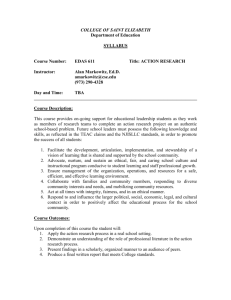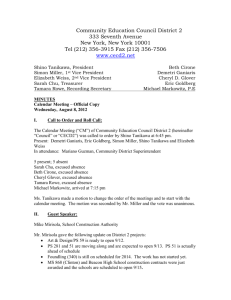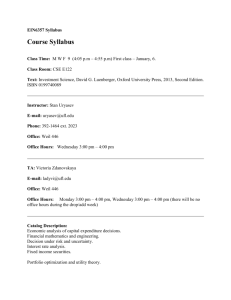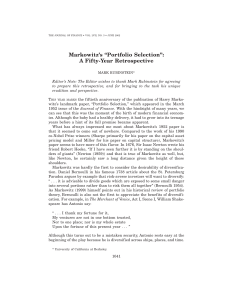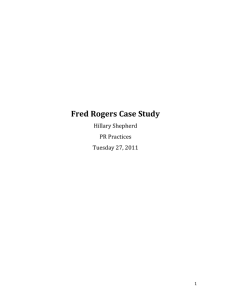Markowitz Misunderstood
advertisement
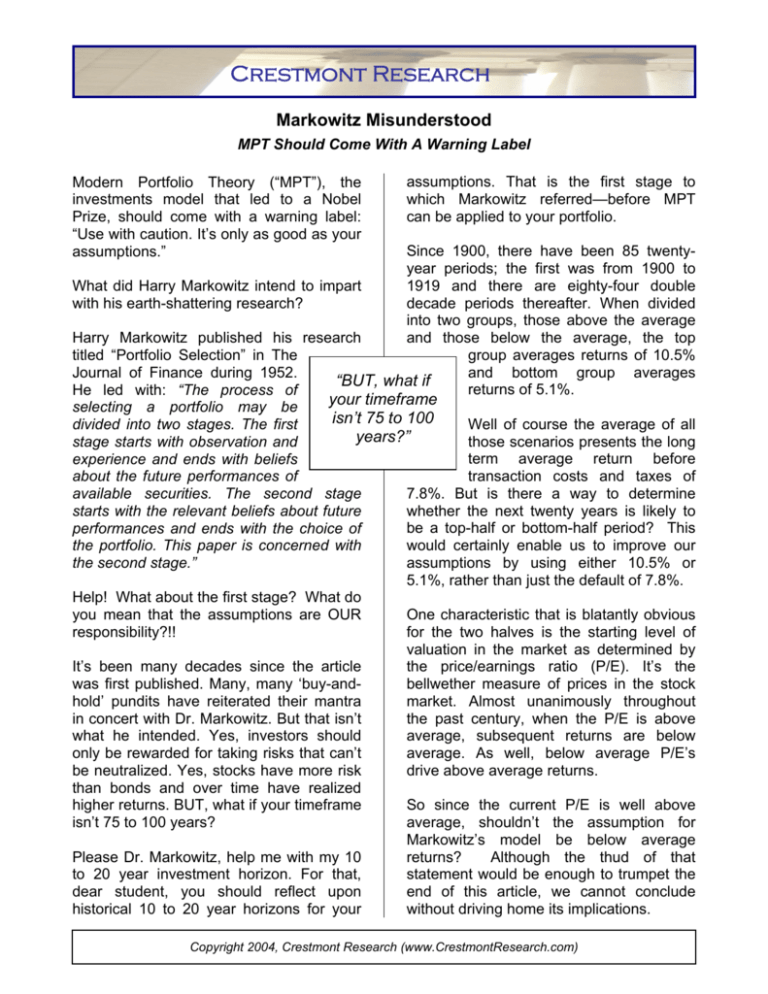
Crestmont Research Markowitz Misunderstood MPT Should Come With A Warning Label Modern Portfolio Theory (“MPT”), the investments model that led to a Nobel Prize, should come with a warning label: “Use with caution. It’s only as good as your assumptions.” assumptions. That is the first stage to which Markowitz referred—before MPT can be applied to your portfolio. Since 1900, there have been 85 twentyyear periods; the first was from 1900 to 1919 and there are eighty-four double What did Harry Markowitz intend to impart decade periods thereafter. When divided with his earth-shattering research? into two groups, those above the average and those below the average, the top Harry Markowitz published his research group averages returns of 10.5% titled “Portfolio Selection” in The and bottom group averages Journal of Finance during 1952. “BUT, what if returns of 5.1%. He led with: “The process of your timeframe selecting a portfolio may be isn’t 75 to 100 Well of course the average of all divided into two stages. The first years?” those scenarios presents the long stage starts with observation and term average return before experience and ends with beliefs transaction costs and taxes of about the future performances of 7.8%. But is there a way to determine available securities. The second stage whether the next twenty years is likely to starts with the relevant beliefs about future be a top-half or bottom-half period? This performances and ends with the choice of would certainly enable us to improve our the portfolio. This paper is concerned with assumptions by using either 10.5% or the second stage.” 5.1%, rather than just the default of 7.8%. Help! What about the first stage? What do One characteristic that is blatantly obvious you mean that the assumptions are OUR for the two halves is the starting level of responsibility?!! valuation in the market as determined by the price/earnings ratio (P/E). It’s the It’s been many decades since the article bellwether measure of prices in the stock was first published. Many, many ‘buy-andmarket. Almost unanimously throughout hold’ pundits have reiterated their mantra the past century, when the P/E is above in concert with Dr. Markowitz. But that isn’t average, subsequent returns are below what he intended. Yes, investors should average. As well, below average P/E’s only be rewarded for taking risks that can’t drive above average returns. be neutralized. Yes, stocks have more risk than bonds and over time have realized So since the current P/E is well above higher returns. BUT, what if your timeframe average, shouldn’t the assumption for isn’t 75 to 100 years? Markowitz’s model be below average returns? Although the thud of that Please Dr. Markowitz, help me with my 10 statement would be enough to trumpet the to 20 year investment horizon. For that, end of this article, we cannot conclude dear student, you should reflect upon without driving home its implications. historical 10 to 20 year horizons for your Copyright 2004, Crestmont Research (www.CrestmontResearch.com) Markowitz Misunderstood (page 2) Markowitz gave us the holy grail to portfolio management; conventional wisdom has forgotten or ignored the need to use appropriate assumptions—the essential “first stage” of developing appropriate assumptions. As Markowitz emphasizes, it is our responsibility to use “observation and experience” to develop “beliefs about the future performances.” Although future performance of the stock market cannot be predicted with certainty or precision, through observation and experience we may be able to at least refine the assumptions into above-average or belowaverage territory. Based upon current market valuations, it is very likely that we’re in the ‘below-average’ batters box and should include a below average return assumption for the next twenty years. When we do, the allocation to equities will be significantly lower and the expected portfolio return will decline. Oh no. Should I hang on to hope that this time will be different? Or should I rationally include, or at least consider, a scenario that presents below average assumptions to Dr. Markowitz? Dear Dr. Markowitz, what should we do if the assumptions for stock market returns are below average? Ed Easterling is President of Crestmont Holdings, L.L.C., a Dallas-based investment firm that manages a family of fund of hedge fund portfolios. As well, he is a member of the adjunct faculty at SMU’s Cox School and teaches the course on hedge fund investment management for MBA students. Crestmont develops financial market research through its affiliate Crestmont Research (www.CrestmontResearch.com). Copyright 2004, Crestmont Research (www.CrestmontResearch.com)


